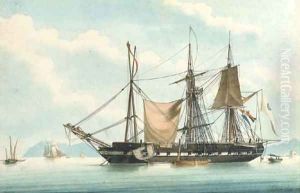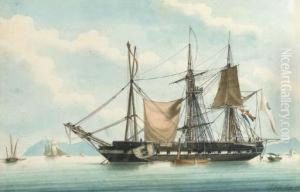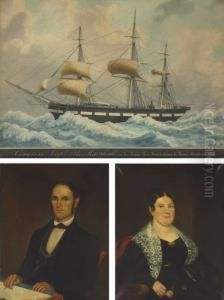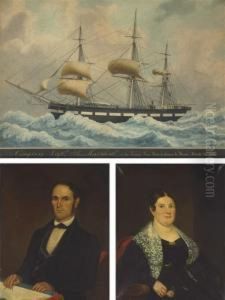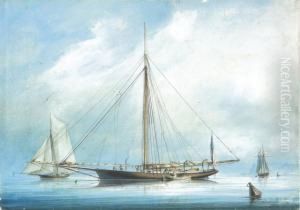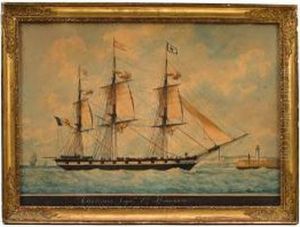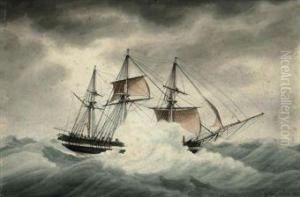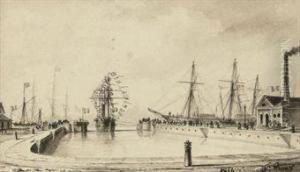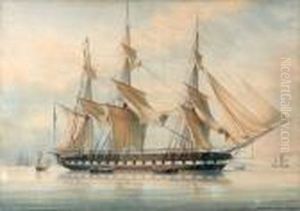Francois-Joseph-Frederic Roux Paintings
Francois-Joseph-Frederic Roux, commonly known as Frederic Roux, was a French marine artist born on August 15, 1805, in Marseille, France. He was part of a family of hydrographers and marine painters, a tradition that extended over several generations. His father, Joseph Roux, was also a well-known hydrographer and artist, and Frederic followed in his footsteps.
Roux developed a passion for the sea and ships early in his life, and this profoundly influenced his art. He initially trained under his father and later furthered his skills by studying under other marine painters of the time. His work is characterized by precise detail and accuracy, which was highly valued in his depictions of naval battles, ships, and harbor scenes.
In addition to painting, Frederic Roux was also a hydrographer, charting the coasts and waters of France. His dual expertise as an artist and a hydrographer allowed him to create works that were not only aesthetically pleasing but also technically accurate and useful for navigation.
Roux's paintings were widely popular during his lifetime, especially among naval officers and shipowners who appreciated the meticulous detail of his work. His reputation extended beyond France, and he had patrons across Europe and the Americas. Many of his works remain on display in maritime museums and in private collections around the world.
Frederic Roux's contribution to marine art and hydrography continued to be recognized long after his death in Marseille on November 12, 1870. His legacy is reflected in the detailed ship portraits and maritime scenes that continue to captivate audiences with their historical value and artistic merit. Roux's work remains a valuable record of the maritime history of the 19th century and serves as an inspiration for marine artists to this day.
